History
History
The beginning of St Andrew’s School, perhaps, could be traced to the 1850s when two Anglicans, namely, Mr Sim Quee and Mr Tye Kim, set up a private institution in Chin Chew Street.
Founding of St Andrew’s School
As a result of Rev Humphreys’ sermon on Whitsunday 1856, a group of laymen formed themselves into a committee for the spreading of the Gospel in the then 37-year old Singapore.
They recruited a missionary, and this resulted in the arrival of the Rev Edward Sherman Venn in 1861. At that time the private institution at Chin Chew Street was not affiliated to the Anglican Church.
The connection took place only on 8 September 1862 when the Anglican Church, because of the work and influence of Rev Venn, adopted it. Thus, St Andrew’s School was founded on 8 September 1862.
The School at Upper Hokkien Street
One year later, on 10 September 1863, the School moved to Upper Hokkien Street because of the need for a better building and more space for the growing School. Soon after, Mr Cheok Loy Fatt was appointed the Headmaster and he proved to be an excellent choice.
Grant-In-Aid
For some years, the Mission had serious financial difficulties, resulting in the withdrawal of its financial support for the School in 1866. The School suffered an even greater loss with the passing away of her Founder and friend. In spite of these losses, Loy Fatt carried on managing the School by himself.
In 1872, the Colonial Chaplain, Canon J A Beccles, successfully applied to the government for financial aid for St Andrew’s School became a grant-in-aid institution on 22 May 1872. In the same year. Rev George Frederick Hose succeeded Canon J A Beccles as Colonial Chaplain.
The School at Victoria Street
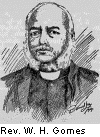 Meanwhile, the School expanded in size and shifted to Victoria Street. Hose did a great deal for the School. One of his first acts was to invite the Rev William Henry Gomes from Borneo to act as School Superintendent. Under the wise and capable guidance of Gomes from 1872 to 1902, the School prospered and grew.
Meanwhile, the School expanded in size and shifted to Victoria Street. Hose did a great deal for the School. One of his first acts was to invite the Rev William Henry Gomes from Borneo to act as School Superintendent. Under the wise and capable guidance of Gomes from 1872 to 1902, the School prospered and grew.
The School at Stamford Road
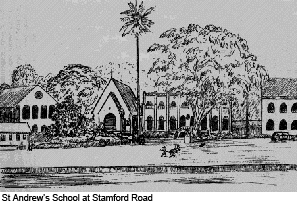
Even as early as 1873, both Gomes and Hose knew that the School’s growth would be hampered by poor accommodation. Their hard work was rewarded when the Government gave the School a 4-acre piece of land on the then Government Hill with a frontage on Stamford Road.
The first building constructed was the Chapel in 1875 and in that same year, the School vacated its cramped premises in Victoria Street and moved into the Stamford Road site. Classes were held in the Chapel, which also became an important centre for public worship.
In 1888, Loy Fatt resigned as Headmaster and Mr D S Ponniah succeeded him in 1890. The School suffered a severe loss when Gomes died after having been the Superintendent for 30 years. He was succeeded by the Rev R Richards who served from 1902 to 1934.
First Athletic Sports Meet
In 1912, Rev J Romanis Lee succeeded Ponniah as Principal. Romanis ranked as one of the greatest benefactors of the School for his time saw many significant changes and St Andrew’s School acquired many of its modern characteristics under his leadership. He set about expanding the premises of a school which showed so much enthusiasm and aptitude for outdoor games. On 29 July 1940, the new two-storey building with its sprawling campus at Woodsville was officially opened. Then followed the war years.
Post-War Years
St Andrew’s School was the first to re-open immediately after the war. Until the arrival of Adams who had just been released from internment Dr D D Chelliah acted as Principal.
In 1946, Dr D D Chelliah started the Continuation School. The Junior School grew rapidly and in 1950, Mr Dong Chiu Sing was appointed Principal of the Junior School, followed by Miss Beeston four years later.
In 1955, the Junior School was divided into Junior I and Junior II headed by Mr Goh Soon Toon and Mr Kiong Woon Kiew respectively. Mr S K Bandara succeeded Mr Kiong subsequently. His tragic death led to both Schools being placed under Mr Goh Soon Toon in 1960.
Mr Quahe Beng Chuan succeeded Mr Goh on 1 September 1964 and upon his retirement in 1981, Mr Chin Wai Fah, another Old Boy, became the Principal of the school. In January 1985, Mr Tan Cheng Lim succeeded Mr Chin as Principal of Junior School.
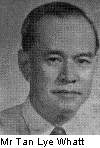 As the pupil population grew, the need for more classrooms became more pressing. Another floor was added so that the 2-storey building became a 3-storey school in 1952. In the same year, the Lim Teck Kin Tower was also added to the School.
As the pupil population grew, the need for more classrooms became more pressing. Another floor was added so that the 2-storey building became a 3-storey school in 1952. In the same year, the Lim Teck Kin Tower was also added to the School.
Adams continued to serve the School after the war, leading the School from glory to glory. In 1956, he retired and Mr Tan Lye Whatt succeeded him.
The school community had grown so big that upon Lye Whatt’s shoulders was the responsibility of the overall charge of the Senior School, the Junior School, the Continuation School and the Boarding House. He was therefore appointed Warden of St Andrew’s in addition to being Principal of the Senior School.
It was during the Wardenship of Lye Whatt that the Church of Ascension and the Science Block were added to the school campus.
Community Service
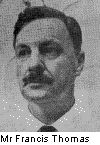 Lye Huat retired in 1963 and his Senior Assistant, Mr Francis Thomas, succeeded him. His love for community service was second to none.
Lye Huat retired in 1963 and his Senior Assistant, Mr Francis Thomas, succeeded him. His love for community service was second to none.
The Clinic Club, which later evolved into the Social Work Group, bears testimony of Thomas’s genuine feeling for the needy and the less fortunate. Thomas retired on 14 March 1974 and was succeeded by Mr C D Jensen whose stay was a short one.
Upon Jensen’s resignation in June 1976, his Senior Assistant, Mr Ong Soo Kiong, acted as Principal until Mr Harry Tan Ho Swee, a civil servant and an Old Boy, was appointed Warden for St Andrew’s and Principal for the Senior School from 15 December 1976.
Establishment of the Junior College
The School continued to grow and would have suffered a split at the seams in 1978 had it not been for the establishment of the St Andrew’s Junior College and the subsequent removal of the Pre-University classes from Woodsville. The Ven Tan Teng Wai headed the College and in 1990, Mrs Belinda Charles succeeded him.
New School Buildings
With the continuing growth of the School, space could have been a problem again by the late 1980s had nothing been done. Fortunately for the School, Potong Pasir was being developed at that time and a 4.19-hectare site across the Kallang River was earmarked for education.
With the Lord’s prompting, the nudging of the School Supervisor, Mr David Chelliah, and the blessings of Bishop Chiu Ban It, the School went in faith in 1981 to the Director of Education to “book” that site for the re-siting of the Senior Wing. It included plans to upgrade subsequently the present Woodsville site with full facilities for a growing and vibrant Junior School.
Physical work on the new Secondary School and the Chapel-cum-Counselling Centre started on 3 November 1984. In response to the proposal by the then Minister for Education, the Secondary School commenced on a building extension programme to enable it to go single session. This was fulfilled in January 1994.
Mrs Priscilla Krempl took over the headship of the Secondary School from Mr Harry Tan in 1994. In the case of the Junior School, after the unfortunate demise of Mr Tan Cheng Lim, Mr Phua Eng Hee became the Principal of the Junior School in 1987. In 1990, he was succeeded by Ms Jacqueline Oehlers who in turn was succeeded by Miss Poh Chwee Sian in mid-December 1997.
Meanwhile, the Junior School at Woodsville suffered from noise pollution due to the expansion of the Pan-Island Expressway. A decision was made to relocate the Junior School from its Woodsville site to the school field nearer Potong Pasir. The new building was completed in January 1996. It was officially opened by the then Minister for Education, Rear-Admiral Teo Chee Hean, on 6 September 1997.
St Andrew’s Village
Plans to return the St Andrew’s family of schools were mooted and with God’s grace, renovation and expansion began as early as 2003. By 26 August 2006, the St Andrew’s Village was officially opened at the 1000-seater Cultural Centre at located at the Junior College. The village brings together the St Andrew’s Junior School, St Andrew’s Secondary School, St Andrew’s Junior College, as well as the (Anglican) Diocesan Office, the Ascension Kindergarten and three churches - the Chapel of the Resurrection, Chapel of the Holy Spirit and Church of Ascension.
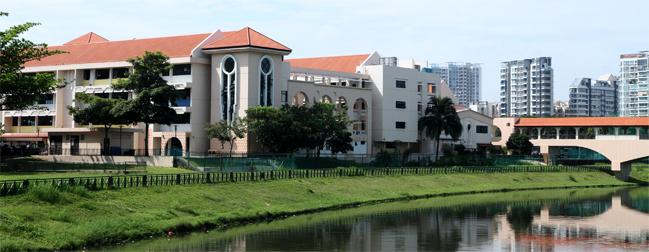
Facilities at the Village includes an Olympic size swimming pool, a 1,000-seat performing arts centre, air-conditioned school halls, gymnasiums, indoor basketball court, roof-top basketball court, tennis courts, cafe, rockwall, astro-turf artificial field and a sheltered bridge across the Kallang River to connect the Junior and Secondary Schools to the Junior College across the river.

In 2010, piling work began for the construction of St Andrew’s Hall, a 12-storey hostel with sufficient rooms to accommodate up to 600 students with facilities including a dining room for 600 people, an adjoining multipurpose hall as well as a clinic to serve the residents of the hall and St Andrew’s Village.

